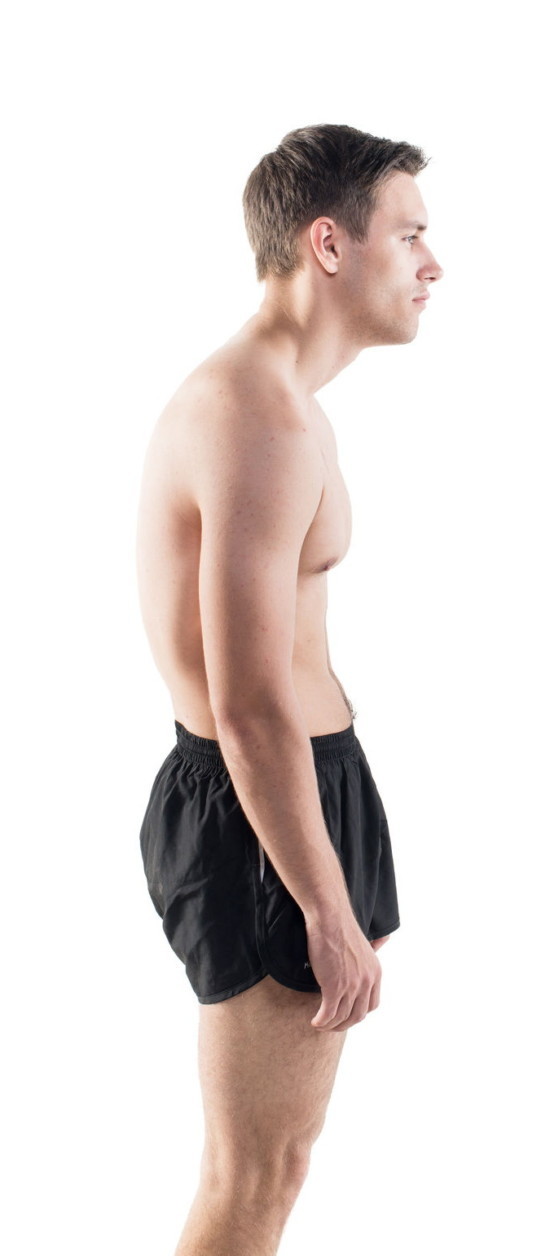10 Shocking Ways That Your Posture Affects Your Health
Dec 20th 2022
(Somatic Movement Center) Our posture—the way we sit and stand—is rarely genetic or out of our control. It’s simply the result of chronic muscle tension pulling our skeleton out of alignment. This muscle tension builds up over time as a result of our daily movement habits and our reactions to stress.
In other words, muscle memory determines our habitual posture. I’ll tell you how to retrain your muscle memory and change your posture at the end of the post, but first read these 10 ways that your posture affects your health—they’ll probably shock you!
1. Your posture can increase or decrease your testosterone levels.
In 2010, Amy Cuddy of Harvard University and Dana Carney and Andy Yap of Columbia University tested the effects of what they call “power posing,” and found that posture has a direct effect on testosterone levels.
In the study, test subjects had to spend two minutes sitting in either high-power or low-power poses. High-power poses were expansive and open, meaning that the subject expanded their body to take up more space and brought their limbs away from the center of their body. Subjects in low-power poses took up less space and brought their limbs in closer to the center of their body.
The study found that after just two minutes, high-power posers experienced a spike in testosterone levels, while the low-power posers experienced a drop in testosterone.
Testosterone is often thought of as the male sex hormone, but it plays a role in many important bodily functions in both men and women. In addition to regulating libido and reproductive health, testosterone promotes muscle and bone growth, stimulates the creation of red blood cells, increases the production of skin collagen, improves spatial memory and mood, and increases self-esteem and confidence.
If spending just two minutes in a posture can create a measurable shift our testosterone levels, imagine the effects of spending a lifetime in a certain posture?
Read more about high-power and low-power postures.
And check out Amy Cuddy’s Ted Talk!
2. Your posture can increase or decrease your cortisol levels.
The same 2010 study tested the effects of power posing on cortisol levels. After two minutes, the high-power posers experienced a drop in cortisol, and the low-power posers experienced a rise in cortisol.
Cortisol is a hormone that our body releases when we’re under stress. It can help us handle short-term stressors, like being physically attacked. Unfortunately, sustained high levels of cortisol—which many of us experience as a result of ongoing psychological stress—can contribute to a long list of health problems:
- Weakened immune system
- Heart disease
- Weight gain
- Obesity
- Type 2 diabetes
- Imbalances in other important hormones such as DHEA, estrogen, progesterone, and testosterone
- Mood swings and depression
- Thyroid imbalances
- Infertility
- Low libido
- Brain cell death
- Memory loss
- Alzheimer’s disease
- Increased urination
- Increased thirst
- Stretch marks
- Impaired healing and cell regeneration
- Muscle and bone loss
- Hair and skin problems
- Disrupted digestion
- Fatigue
With all these negative effects of elevated cortisol levels, we definitely want to avoid developing habitual low-power posture.
3. Your posture can increase or decrease your tolerance for pain.
Power posing also affects how we perceive pain. Another 2010 study explored how adopting a dominant or submissive pose affects our pain tolerance. The findings were quite clear: After holding a dominant pose for just 20 seconds test subjects showed an increased tolerance for pain.
Power posing helps us feel less pain because it gives us a sense of control. Studies show that when we feel like we have control over a situation, our tolerance for pain increases. Likewise, when we feel like we’re not in control, our tolerance for pain is reduced. Power posing also increases testosterone levels, which further increases our tolerance for pain.
The relationship between posture and pain tolerance can be a downward spiral for people in chronic pain. When you’re in pain, you may instinctively adopt a low-power posture because you feel tired, depressed, powerless, stressed, or protective of your body. Then as we’ve learned, your low-power posture may keep you stuck in these feelings by affecting your hormone levels and pain tolerance, making it harder for you to get out of pain.
4. Your posture can cause sciatica, disc degeneration, and arthritis.
This one may not seem shocking at first, but most people don’t realize how directly their posture leads to many common spinal problems. These problems tend to occur in the lumbar and cervical portions of the spine, where the spine has natural lordotic curves.
When the muscles in your lower back or neck become chronically tight, they compress your vertebrae and discs. This can easily cause nerve compression, bulging or herniated discs, thinning of the discs, and growth of osteophytes.
While these conditions are often thought to be unavoidable structural issues, the vast majority of them are functional in nature—simply caused by the way we’re using our bodies. You can read more about mechanical back pain in this blog post.
5. If you’re an athlete, postural imbalances increase your risk of getting injured.
If your posture is out of alignment in any way—like if your lower back is tight and arched, or if one hip is higher than the other, or if your legs are rotated inward or outward—you’ll get injured more easily when you play sports or work out.
Researchers at the Sports Injuries Research Centre in Limerick, Ireland performed a two-year study with soccer players and found that muscle strains and back, knee, and ankle injuries were all linked to dysfunctional postural habits such as swayback, lumbar lordosis, kyphosis, scoliosis, and lower leg misalignment.
Other studies have had similar results, showing that athletes with poor lower back posture are more likely to suffer hamstring strains, and that misalignment of the knee and ankle leads to anterior cruciate ligament injuries.
Someone who sits down all day might not feel the effects of these postural issues. But when athletes put strain on their misaligned joints, either with a great deal of weight or many repetitions of a movement, pain and injury are almost inevitable.
6. Your posture can increase your risk of tension headaches.
Any misalignment of the spine—whether it be an arched back, a scoliotic curve, or rounded or forward head posture—involves chronic tightness in the muscles of the back, shoulders, and neck. Like a pulley system, this often leads to tension in the muscles that cover the skull (the occipitalis and temporalis), as well as those of the face and jaw.
The National Headache Foundation estimates that 78% of all headaches are tension headaches. Tension headaches typically feel dull and aching, as if a band is tightening around your head. If you suffer from headaches, consider whether your posture and chronic muscle tightness could be causing or contributing to them.
7. Your posture can raise your blood pressure.
If you have rounded posture, like the man in this photo, you’ll need to pay special attention to #7 through #10.
Postural kyphosis results from chronically tight muscles in the abdomen and chest pulling the rib cage and head forward and down. While we used to see this posture mostly in elderly people, increasing numbers of teens and even children have rounded posture due to excessive time spent looking down at their phones.
Rounded posture, and the muscle tension that causes it, puts a great deal of pressure on the thoracic cavity, increasing blood pressure. If you have even the slightest tendency to round forward, you should start learning how to release the chronic tightness in your abdomen and chest ASAP. And if your rounded posture has already become quite pronounced, not to worry—it’s never too late to learn how to release your muscles and improve your posture!

8. Your posture can cause shallow breathing.
When you’re rounded forward, it’s very difficult to take a full breath (try it!). Your lungs can’t expand forward or out to the side. And since your stomach is held tight, your diaphragm can’t press downward, so it can’t create the space in your thoracic cavity which your lungs need to fully expand.
If shallow breathing doesn’t seem like a big deal, consider the consequences. Shallow breathing triggers our stress response, weakens our immune system, causes dry mouth and fatigue, makes respiratory problems worse, leads to cardiovascular issues, lowers oxygen levels in the body, and is linked to anxiety and panic attacks.
9. Your posture can affect your digestion and elimination.
When you have rounded posture, the chronic tension in your abdominal muscles compresses the contents of your abdominal cavity. When your stomach, small intestine, and large intestine are constantly compressed, digestion and elimination can be inefficient, not to mention really uncomfortable.
The effects of rounded posture don’t stop there. People with rounded posture may experience an increased need to urinate because their bladder is compressed. But since the muscles involved in elimination tend to contract as part of the muscular pattern involved in rounded posture, these folks may also have difficulty urinating.
We tend to think of these as old-age problems, but in reality, many of the digestive and elimination issues that we develop as we get older are simply a result of chronic muscle tension and habitual posture.
10. Sorry, guys: Your posture can cause impotence.
When the abdominal muscles contract, the muscles of the pelvic floor contract as well—it’s all part of the natural pattern of the withdrawal response. When the muscles of the pelvic floor are chronically tight, like any muscle they become “frozen”—we lose the ability to voluntarily control them.
In addition, chronically tight muscles in the abdomen and pelvic floor reduce blood flow to the area. And as we’ve already learned, rounded posture also decreases testosterone levels and raises cortisol levels, lowering libido.
Have I gotten your attention yet?
I hope I’ve made it clear why posture is such an important health issue. As I said at the beginning of the post, our habitual posture is determined by our muscle memory. Over the course of our lives, our nervous system learns to keep certain muscles tight as a result of our daily habits (like athletic training and the way we sit at our desk) and our reactions to stress, which involve muscular contraction.
So how do we release our chronically tight muscles and change our habitual posture? With neuromuscular education. We need teach our nervous system to reduce our resting level of muscle tension, and we need to retrain our proprioception (how we sense our body in space).
Using the technique of pandiculation, you can do simple neuromuscular retraining exercises at home. With regular practice, these exercises not only release your tight muscles and improve your posture, but they also reduce stress, relieve pain, and alleviate many common musculoskeletal conditions.

